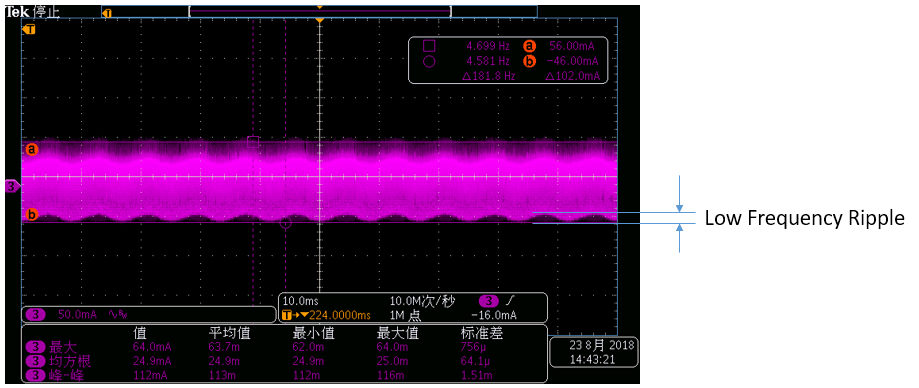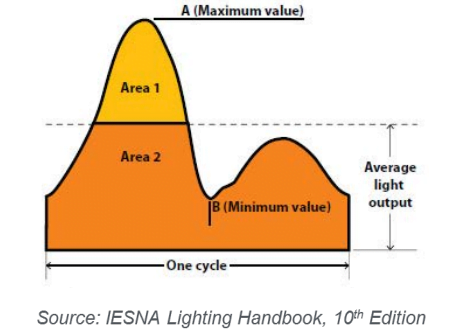This is a video tutor where we can see there is heavy flickering and the author teaches how to remove that on this kind of sports lighting videos, but this article talks about how to make sure that video editors will not have to do such post-camera work by removing the flickering originally.
Why the flashing on video happens?
Generally speaking, the flashing can be caught by very high speed cameras when the stadium light output ripple is significant enough. As we know that the LED light output lumen is proportional to the LED current, so ultimately the video flashing or flickering is caused by the LED driver output current ripple.

The LED driver output ripple can be categorized into two parts: high frequency ripple and low frequency.
High frequency ripple.
This current ripple is caused by the high switching constant current converter and the frequency can be 75-200kHz which is too high for cameras to catch. So normally designers do not need to worry about that. For good quality design, this ripple should also be small to guarantee the output capacitor lifetime.

Low frequency ripple.
The low frequency ripple is caused by input AC voltage fluctuation which the frequency of 100 or 120Hz in different countries. In this frequency range, it is easy for even normal cellphone cameras to catch flickering if the ripple is not controlled. This is the parameter all the designers have to pay attention to. The averaged flicker factor of lighting system should be less than 5% for Elite Level A stadium under 300 fps slow motion video capturing according to the Stadium Lighting Guide 2016 by Union European Football Association (UEFA).

The next question is how to define flicker factor.
Flicker Factor
IESNA (the Illuminating Engineering Society of North America) released the definition of “percent flicker” and “flicker index” in the ninth edition of The IESNA Lighting Handbook. Figure 1 shows how the metrics are defined.

Figure 1 Flicker Index Definition
Percent flicker is a relative measure of the cyclic variation in output of a light source (i.e., percent modulation). This is also sometimes referred to as the “modulation index.”

Flicker index is a “reliable relative measure of the cyclic variation in output of various sources at a given power frequency. It takes into account the waveform of the light output as well as its amplitude,” according to the handbook. The flicker index assumes values from 0 to 1.0, with 0 for steady light output. Higher values indicate an increased possibility of noticeable lamp flicker, as well as stroboscopic effect.
As noted above, in addition to the frequency, the flicker index has a significant effect on how the light makes people feel. Higher flicker index means the more sensitivity to the human eye and the poorer comfort level. Table below shows the typical flicker index of different lights engines.
| Max | Min | Ave | Flicker% | Flicker Index | |
|---|---|---|---|---|---|
| Incandescent | 12.180 | 10.745 | 11.460 | 6.2594 | 0.0194 |
| 100 W MH | 9.1472 | 3.2066 | 6.5147 | 48.088 | 0.1398 |
| T12 Magnetic | 9.6281 | 4.6256 | 7.1565 | 35.096 | 0.0897 |
| T5HO Elec | 10.52 | 9.960 | 10.20 | 2.734 | 0.0036 |
| LED at DC | 43.4 | 41.0 | 42.2 | 2.84 | 0.0037 |
| LED w/ Flicker | 15.996 | 0.0555 | 6.3026 | 99.309 | 0.4498 |
Find the Parameter and Right Product
The definition of uPowerTek ripple current is below:
Ripple Current=Low frequency ripple + High frequency ripple

And this parameter can be found from uPowerTek product datasheet normally page 3.

Summary
Flicker-free is essential for sports lighting and each qualified luminaire should be fully examined by flickering test. Choosing the right LED drivers with less than 5% ripple current is the right work to be done during the designing stage.





